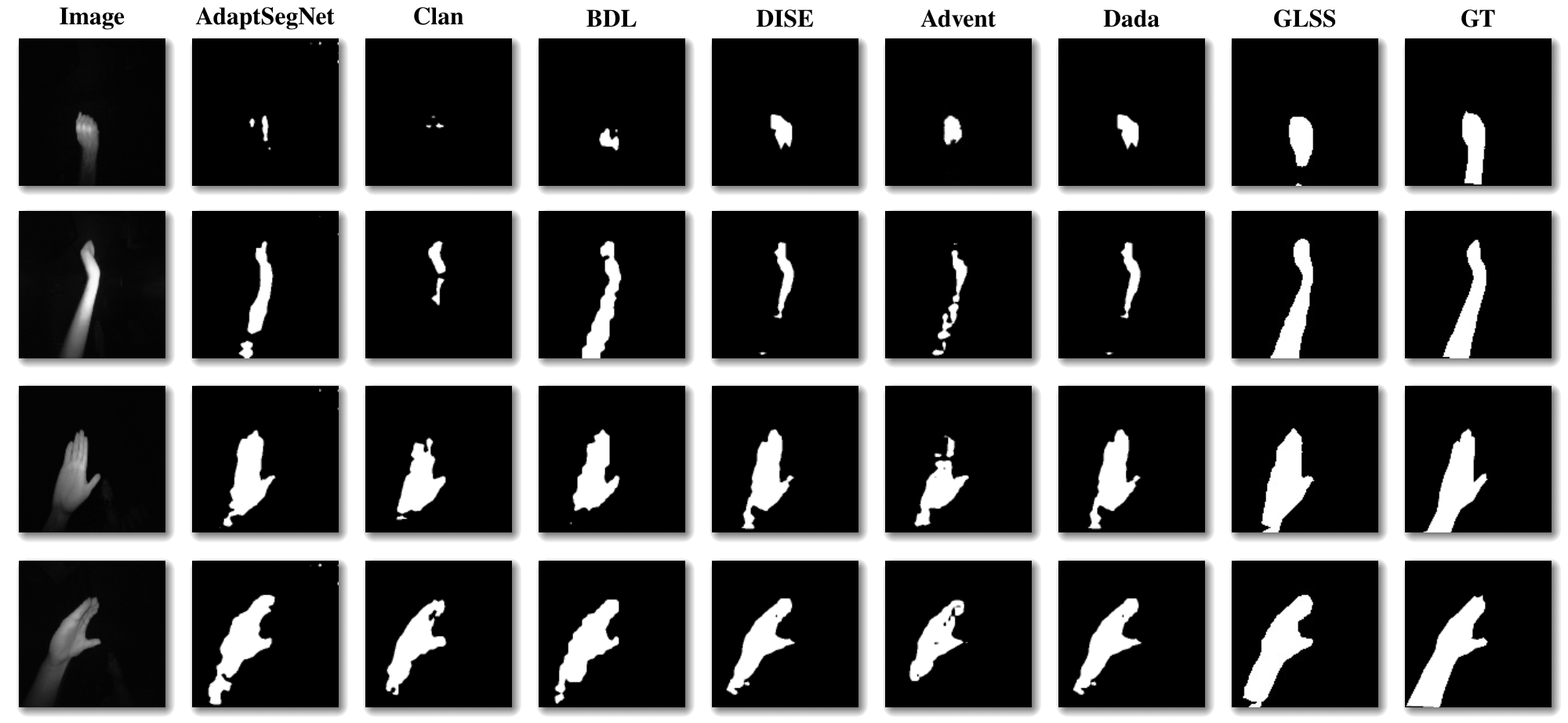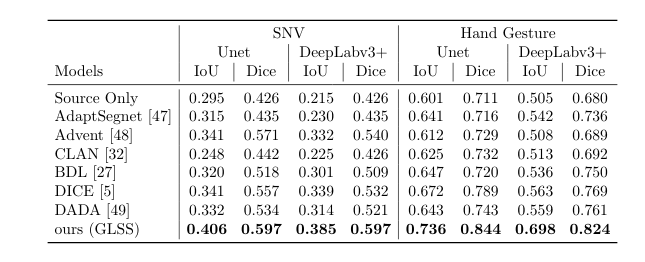Unsupervised Domain Adaptation for Semantic Segmentation of NIR Images through Generative Latent Search
Tensrflow Implementation of our method to transfer the bias from the source to the target domain. The latent space of a generative model, learnt on the source domain, is employed to find the "clones" for the target samples. As the "clones" are sampled from the source distribution, an oracle segmentation model learnt only on source, will interpret these "clones" of target samples in a better way, thereby reducing the domain shift. The proposed method guarantees to reduce the shift.
'Unsupervised Domain Adaptation for Semantic Segmentation of NIR Images through Generative Latent Search' Accepted in ECCV2020 (Spotlight). Preprint: https://arxiv.org/abs/2006.08696
Kindly fill the form to download the dataset https://forms.gle/y5vPeyT6zi9gdqD57 On filling the form, the datasets namely SNV dataset and Hand Gesture dataset will be shared by email.
- tensorflow = 1.14.0
- python = 3.6
- keras = 2.2.5
Image were reshaped to 128x128 dimension and normalized between -1 to 1.
Train segmentation network on the source domain
python u_efficientnet.py
To train VAE and Perfom Latent search on Target domain.
python vae_u-efficientnet_latent_search.py
To Train Vae with Perceptual loss with Deeplabs
python vae_DeepLabs-frez--PL-LS.py
@article{pandey2020skin,
title={Skin Segmentation from NIR Images using Unsupervised Domain Adaptation through Generative Latent Search},
author={Pandey, Prashant and Tyagi, Aayush Kumar and Ambekar, Sameer and AP, Prathosh},
journal={arXiv preprint arXiv:2006.08696},
year={2020}
}


